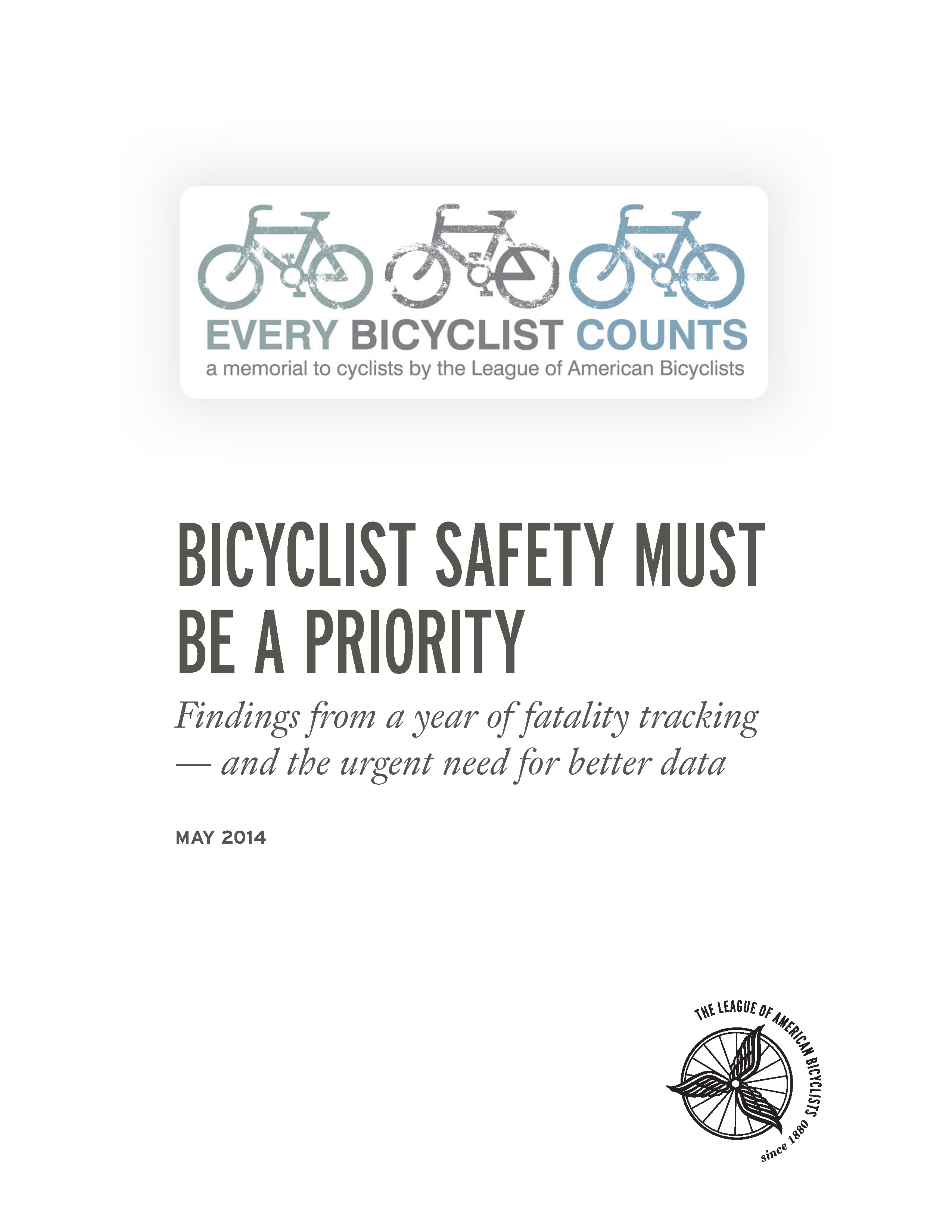DISCOVER YOUR LOCAL BICYCLING COMMUNITY
Find local advocacy groups, bike shops, instructors, clubs, classes and more!
FAQ: Every Bicyclist Counts
 Our Every Bicyclists Counts report has generated quite a lot of discussion since its release last month, which is good. That’s why we do these things!
Our Every Bicyclists Counts report has generated quite a lot of discussion since its release last month, which is good. That’s why we do these things!
We’ve heard everything from heartfelt “thanks” for digging into a genuinely difficult topic to the despairing “what am I supposed to teach my students now.” Let me see if I can provide a little more commentary and context to address some of the more frequent questions we’ve been getting.
I think the first thing to recognize is that this is a policy report. It’s not a marketing document or an educational tool. EBC highlights the poor quality of data, reporting and legal/judicial response to fatal bike crashes and demands more. And these are the crashes for which we have the most reliable data! The report identifies some inherent bias in the way bicyclists are treated when they are the victims of crashes involving motorists — and there is a strong possibility that this carries over to more everyday interactions with law enforcement, traffic safety professionals, traffic engineers and the media.
We are well aware that EBC is sobering reading, and not a document you want to give to a class of eager-to-learn students wanting to enjoy the healthy benefits of bicycling. That’s not the intended purpose at all. The reality, which we have to address, is that bicycling isn’t without risk. In fact, because of a lot of factors — road design, driver and/or cyclist behavior, vehicle or surface defects, etc. — riding a bike is perceived as much more dangerous than it really is and is in fact riskier in the United States than in other countries and riskier than it should be. We have a responsibility to point that out and suggest a data-driven approach to fixing those issues.
The data suggest that both education and engineering solutions are necessary to reduce the annual toll of bicyclist fatalities, and that pretending one or the other is the only solution is fanciful and counterproductive. The League’s commitment to providing valuable and relevant bicyclist education programs through a network of trained instructors is stronger than ever as a result of compiling this report. There is no question in our minds that bicyclists can dramatically reduce their risks of being in a crash (of any kind) by doing a few simple things right — following the rules, being visible, riding with traffic, staying off the sidewalk and out of the gutter.
Equally, we believe there a lot of engineering changes to our roadways that must be made to improve bicyclists safety and comfort — and dramatically increase the chances of someone getting on a bike in the first place. In some cases, especially on higher speed, higher volume roads, that’s going to mean protected bikeways. Rather than oppose these, as some vehicular cyclists have been known to do, we should be ensuring high quality infrastructure coupled with new training components that teach people how to ride in these “new” facilities. At the very least, cyclists who don’t feel the need for protected bikeways themselves should accept the reality that most people do — and not stand in their way.
Ironically, the EBC report suggests that perhaps the greatest improvements in safety for bicyclists have nothing to do with either bicyclist education or protected bikeways. Distracted driving (in all its various forms), excessive speed, and continued tolerance of poor driving by the law enforcement and judicial community combine to make our streets and highways uncivilized and unforgiving places for bicyclists and pedestrians — not to mention the 30,000 motorists who die on our roads every year as well.
A lot of people have mentioned the fact that the report is just about fatalities and that the bigger crash picture is not reflected in EBC. That’s absolutely correct, and we are crystal clear about that throughout the report. That’s one reason why we believe the “hit from behind” percentage is higher than the same figure is reported for “all crashes.” This one number has generated quite a bit of the controversy around the EBC report — and it’s one reason why we got started with the report in the first place. We kept seeing that “cause” reported in news reports we were seeing and it seemed at odds with our own education materials that plays down this number.
As we stopped to think about it (after collecting the data), we realized perhaps this helps explain why people fear being hit from behind — in the rare cases when bicycling is in the news because someone has been killed, its very likely they’ve been hit from behind. Couple that with the reality that most people see bicyclists from behind the wheel of their car and are worried about hitting them or seeing them get hit by the distracted driver in front of them… and it’s no wonder that’s the predominant fear among infrequent or non-bike riders. It may also help explain why exhorting people to “take the lane” is counterintuitive and a tough sell, even though it may well be sound advice. That is useful knowledge to take into the classroom.
Finally, the truly scary part of the report is the number of questions and issues it rasies about the quality of the data we have to work with — and this is for the fatal crashes, about which we supposedly know the most!